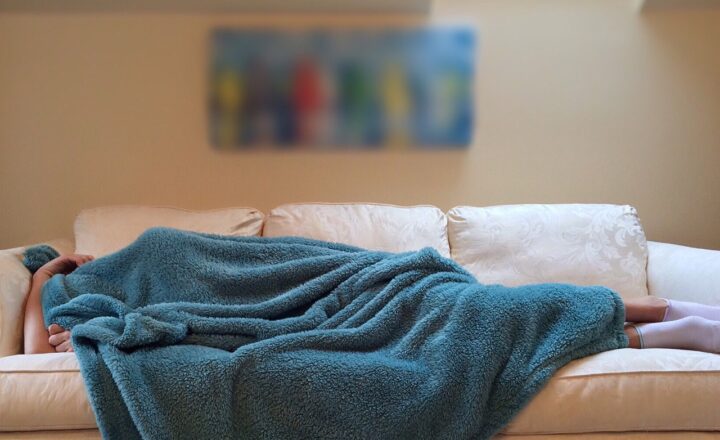The Mysterious Phenomenon of Deja Vu and What It Reveals About the Brain
November 16, 2024

Deja vu is a captivating phenomenon that creates a fleeting sense of familiarity in unfamiliar circumstances. It is believed to affect around 60-70% of the population at some point in their lives. The term, stemming from the French phrase meaning “already seen,” is not just a mere quirk of human experience but a complex interplay of memory, perception, and the brain’s function that gives us a glimpse into how our minds work.
1. What is Deja Vu?
Deja vu can be defined as the eerie sensation of having already experienced a situation that is new. Whether it’s visiting a new town that feels oddly familiar or encountering a person for the first time, the feeling can be perplexing. This phenomenon usually lasts only a few seconds and can leave an individual in a state of disbelief or even disorientation.
Several theories have sought to explain why we experience deja vu. Among them, the memory processing theory posits that deja vu occurs when there is a mix-up in the brain’s memory systems, leading to the feeling that an experience is being repeated. Other theories suggest it may have roots in neurological function or even psychological elements like stress or fatigue.
2. Types of Deja Vu:
Deja vu can be categorized into a few types, each presenting unique experiences:
- Deja vécu: This is the most common form of deja vu and refers to the sensation of having lived through the experience before. It often involves a strong feeling of familiarity despite the current context being entirely new.
- Deja senti: This variation pertains to the feeling of having already felt a specific sensation or emotion. For instance, you may feel a rush of sadness or happiness that seems eerily familiar in a new setting.
- Deja visité: Less commonly reported, deja visité involves the sensation of having visited a place before. This can often occur when someone visits a new city or building and has a strong sense of prior acquaintance with its layout or environment.
Identifying these types helps researchers understand the nuances of deja vu better and how it can manifest in different contexts.
3. The Neuroscience Behind Deja Vu:
The science of deja vu delves into intricate brain functions and memory processes. Neurologists propose that this phenomenon is a result of the brain’s memory systems being triggered. Specifically, the following brain structures play critical roles:
- Hippocampus: This area is essential for forming new memories. It processes experiences for long-term storage. In the case of deja vu, there is a suggestion that the hippocampus could be misfiring, leading to a false familiarity with a new experience.
- Temporal Lobes: The temporal lobes are associated with memory and retrieval of previously stored information. Anomalies in these areas might trigger the sensation of having experienced something before, even when it hasn’t been lived through previously.
- Amygdala: Often associated with emotions, this structure can amplify the emotional experience linked to deja vu episodes, making them feel more profound and impactful.
Research conducted on patients with temporal lobe epilepsy has shown that deja vu can often precede a seizure, indicating a direct link to the encoded memories being retrieved incorrectly or out of context. This connection emphasizes the delicate balance within our brain’s memory processing systems.
4. Psychological Perspectives on Deja Vu:
On a psychological level, deja vu can be influenced by factors such as mood, stress, and fatigue. Some researchers suggest that people who are under stress or experiencing high levels of anxiety may be more prone to experiencing deja vu. It can act as a coping mechanism or a mental escape from overwhelming feelings, allowing the mind to momentarily retreat into familiar territory even when the circumstances are new.
Additionally, individuals who are also highly imaginative or possess strong intuition might find themselves encountering deja vu more frequently. Their brains are more adept at connecting patterns and making associations, which can enhance the feeling when something feels vaguely familiar yet unexplored.
5. How to Cope with Deja Vu:
For most, deja vu is a harmless and infrequent occurrence. However, if someone experiences it excessively, it may be worth exploring coping mechanisms:
- Mindfulness and grounding techniques: Engaging in mindfulness practices can help anchor an individual and reduce the stress that may contribute to deceptive memory formations, which can escalate feelings of disorientation during deja vu episodes.
- Understanding the phenomenon: Gaining awareness of deja vu can demystify the experience. Accepting that it’s a common occurrence can eliminate fear or anxiety associated with feeling lost and confused.
- Consulting a professional: If deja vu becomes frequent and disrupts daily life, a consultation with a mental health professional may be necessary to address potential underlying concerns that may require further exploration or treatment.
6. Conclusion:
In conclusion, deja vu is a fascinating reminder of the brain’s complexities within the realm of memory and consciousness. By unraveling its mysteries, we gain insight into not only how our memory systems work but also how they can sometimes misfire, creating intriguing yet perplexing sensations of familiarity in new experiences. While science continues to explore the depth of this phenomenon, individuals can find solace in understanding it as a normal part of human experience. As more research unfolds, we may one day fully uncover the mechanisms that lead to the phenomenon of deja vu, offering an even clearer picture of what it reveals about our brains and perceptions.







